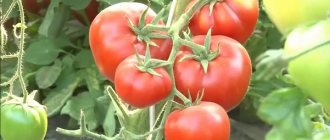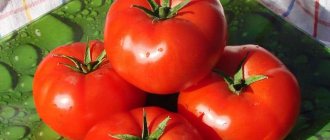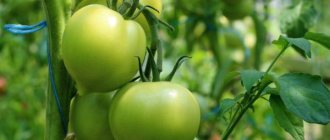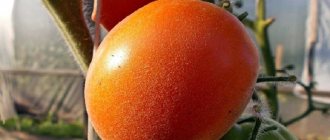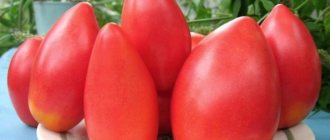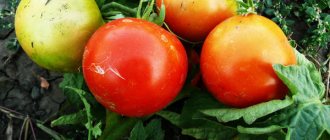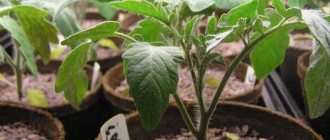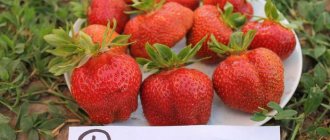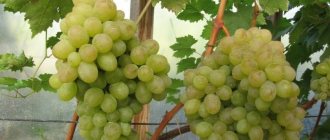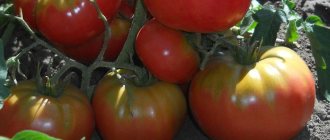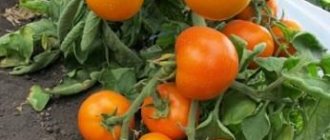The grape variety “Timur” belongs to the so-called “Vostorgov” group of new hybrid forms bred by Russian specialists from VNIIViV named after. Ya. I. Potapenko. Their genotype is dominated by Amur grapes and European varieties, which are distinguished by high winter hardiness, early ripening of shoots and resistance to major grapevine diseases.
The Timur grapes (pictured) are highly valued by gardeners for their spectacular, tasty berries and very early ripening
“Timur” has numerous advantages, but is considered very capricious to care for and requires special attention. In the article we will talk in detail about the characteristics of the plant and its cultivation.
History of variety selection
The grape variety Timur is an early ripening variety. A number of Russian scientists were involved in its breeding. It is believed that the main role in the appearance of the variety belongs to the breeder I. Potapenko, who, after conducting many practical experiments, eventually crossed the varieties Vostorg and Frumuas Albe. Since grapes are a heat-loving plant and grow mainly only in the warm regions of the south of the country, breeders have been trying for many years to grow varieties that could grow and bear fruit just as well in the northern regions. As a result of numerous attempts, varieties were developed that poorly took root in regions with short summers and harsh winters: during the short period of summer, the berries ripened poorly and tasted sour. And only when the Moldovan grape varieties Frumoasa Albe (White Beauty) and Delight were crossed, a hybrid called No. 6 was obtained. It turned out to be a suitable option for the northern regions, it began to bear fruit early and produce tasty fruits. Later the variety was named Timur, and this grape received its own description.
Description of Timur grapes
Timur has the following qualities:
- fruit ripening time ranges from 100 to 115 days;
- the photo shows that the berries of Timur grapes have an amber-green color and an almost regular oval shape;
- one berry weighs about 10 g, and clusters - 400-600 g;
- the inside of the berry is dense and juicy, has a slight nutmeg aroma;
- shoots age quickly and bear fruit early;
- the peel of the fruit is fragile and breaks easily;
- the berries contain a high sugar content - up to 25%;
- the hybrid has excellent frost resistance - down to -250C;
- The variety is insensitive to most diseases.
The Timur grape vine is brown in color, with dissected three-lobed leaves. The bushes are low-growing, so the variety is suitable for creating hedges and is suitable for cultivation throughout Russia. Hybrid Timur is resistant to diseases such as oidium and mildew.
The fruits ripen early and are stored for a long time, resistant to long-term transportation.
The main disadvantages of the variety are that the grape bush does not grow well if the soil is wet or heavy: then the fruits may not ripen and have a grassy-tart taste.
Description of grapes Timur pink
More and more photos and reviews from summer residents are appearing online, highlighting unique features in the description of the Timur pink grape variety:
- the fruit ripening period is 110-130 days;
- the harvest begins approximately in the second third of August;
- the fruits are numerous: the variety bears fruit well, but is inferior in fertility to its white counterpart;
- the average weight of one bunch is about 800 g, and one berry - 8-10 g;
- ripe berries are pinkish-violet, elongated;
- has a high calorie content: up to 70 calories per 100 g;
- the pink variety contains more sugar than the white variety.
Like its white counterpart, pink Timur grapes are resistant to frost and long-term transportation.
But it also has disadvantages:
- The fruits have a thick skin, which reduces their taste;
- due to its high sugar content, it can raisin directly on the branch;
- afraid of grape mites.
Pink variety
The Timur white grape has a brother - Timur pink, which was produced by Ukrainian breeders as a result of crossing Timur with the Vostorg Kubansky grape variety.
It is quite clear that both Timurs differ in the color of the berries. But besides this, the pink variety has its own unique characteristics:
- it has larger clusters - an average weight of 800 g (white - 600);
- it is superior to its white counterpart in the size of the berries, which, moreover, are sweeter;
- pink Timur grapes, however, have a denser skin, but it is easy to chew, so there are no problems with this;
- the harvest of this variety is characterized by later ripening (approximately half a month longer);
- Unlike his white counterpart, pink Timur is affected by the grape mite.
Read also: Cherry plum: beneficial properties and contraindications for use
But the main feature of this variety is its always good rooting ability. Literally after three years, and sometimes even earlier, a planted cutting begins to bear fruit.
It is very difficult to protect grapes from mites. For this reason, it is necessary to carry out preventive treatments of bushes regularly.
Anyone who plants Timur grapes must remember that without proper care they, like any other grape, will not develop properly. So to get excellent results from his bushes you have to work hard.
Timur cuttings should be planted in spring or autumn before night frosts occur. The place should be sunny.
As already noted, this variety is good for grafting. Typically, the rootstock is a vigorous, healthy grape bush with a fairly strong root system.
Characteristics of the variety
The Timur grape is a hybrid, has a short vine, is resistant to disease and frost, and the fruits have high taste. Young seedlings take root well and grow quickly. They begin to bear fruit on the 110th day. The variety's clusters are dense, conical in shape, weigh about half a kilogram each, and if properly cared for, after three years they increase in size and can reach up to 2 kg. This is clearly visible in the photo; this is also evidenced by videos with descriptions and numerous reviews from fans of the Timur grape variety.
Drought resistance, frost resistance
Hybrid Timur is frost-resistant to temperatures down to -250C. At lower elevations it dies, so it needs special preparation for the winter.
The Timur grape variety is moisture-loving and does not tolerate drought well, so it requires regular watering and attention to ensure that the soil does not dry out. But a month before harvesting, it is recommended to stop watering, except during the dry period. Grapes are also demanding on soils; they grow poorly on heavy and damp soils, and the taste of the berries deteriorates on clay.
Productivity and fruiting
The hybrid begins to bear fruit from the age of 2. Each shoot produces approximately 3 clusters, and they also produce shoots on which fruits are also formed. Therefore, the number of stepsons needs to be regulated and trimmed, then the bunches of berries will become larger.
Timur's clusters themselves remain on the bush for a long time, without losing their taste. The exception is the bunches of pink Timur, whose berries, due to the high concentration of sugar, can turn into raisins right on the bush.
Timur grapes ripen in August. The berries weigh approximately 7-10 g, the average bunch is half a kilogram. They are about 21 mm in diameter and up to 29 mm in length, although they are also larger, up to 34 mm. The skin on the berries is usually dense and chews well. In the pink variety it is denser, however, this does not affect the taste in any way.
On average, 12-16 kg of berries are harvested from one bush.
In wet conditions, fruits may lose their taste, so it is important to monitor the watering regime when growing Timur.
Timur grapes tolerate long-distance transportation well, which makes it more accessible to consumers
Area of application of fruits
The hybrid has good taste and also has a number of healing properties:
- removes cholesterol from the body;
- provides prevention of cancer;
- glucose and fructose help with digestion;
- contains vitamins C, P, E, a number of minerals, acids.
Thanks to this wealth of properties, it is actively used in folk medicine.
Resistance to diseases and pests
Grape bushes, as a rule, are resistant to many diseases and are not afraid of insects, with the exception of the grape mite. When it appears, it is recommended to treat the grape bushes with sulfur (solution). This should be done when the plant blooms or only later, when you harvest.
Advantages and disadvantages of the variety
The advantages of this variety include:
- large berries with great taste;
- rapid ripening;
- good yield;
- high tolerance to frost;
- resistance to various diseases and insects;
- ability to endure long-term transportation;
- adaptability to different regions of the country, regardless of climate.
One of the main disadvantages of Timur is his capriciousness towards wet and clay soil.
Reviews from gardeners
Kirill, 45 years old, Kostanay
This variety turned out to be the only one on the site whose roots and vines were not damaged by the snowless winter and mice. Even the cherries froze almost completely, and almost all the buds on the grapes blossomed in the spring. Under cover, the shoots ripened to the very tips. Left 25 shoots and 30 bunches. The growing season this year began late, in the second half of May, so ripening was delayed. The first harvest was cut on August 20. The autumn was unusually warm, and the grapes hung on the bush until November. The berries fell off in small quantities (no more than a dozen). The only negative when harvesting is delayed is the astringency that appears in the taste. However, for me personally, these grapes are much tastier than white Husayne, Tofi and Krymka combined!
Nadezhda, 39 years old, Poltava
The eight-year-old self-rooted bush “Timur” can bear any load. In all this time I only peased last year. The clusters are small, the largest are 650-700 g. I water the entire vineyard at the end of May and mulch the soil around the bushes. I leave more shoots than normal. Load of 10 bunches. From mid-August the harvest lasted almost without loss until the beginning of September. Unfortunately, some of the bunches were badly damaged by wasps, but we really like the quality of the berries. Even the specific taste of the skin does not bother you, especially since when overripe, the astringency is felt weaker and the characteristic nutmeg and sweetness appear. The variety is proven, I will plant a couple more seedlings from my cuttings.
Leonid, 41 years old, Rostov region
In our conditions, Timur “peas” almost always, on any rootstock. According to my observations, the reason is not the weather or the load, and not even the overwintering - such a varietal defect. But I like small berries, they are the sweetest, juiciest and most often seedless.
Rules for planting grapes
In order to get a large harvest, you must follow the rules and recommendations for planting.
Recommended timing
One of the types of grape propagation is grafting cuttings. They are harvested in the fall, covered in boxes with sand for the winter and stored at a temperature of no more than 120C. In areas with cold climates, grapes are planted in September. Seedlings are planted 2 times a year, in spring and autumn. It is recommended to do this in May, when the earth becomes warmer than 160C.
Important! It is necessary to monitor the bushes: if the time for planting is right, several leaves should appear on adult bushes.
Choosing a suitable location
To plant Timur grapes, you should choose places with light, fertile soils, preferably where there is drainage. The place should be sunny, on the south side. It is advisable that there are no tall or shady trees or buildings nearby. The groundwater level should be below 2 m from the surface.
The planting pit itself is prepared in advance, fertilizing and removing excess moisture. The depth of the hole should be such that the root neck comes out of it. The recess should be approximately 80 by 80 cm and about 60 cm deep.
Selection and preparation of planting material
If the seedlings are purchased from growing specialists, then the grapes are immediately ready for planting. If the bushes are prepared independently or purchased from unverified people, then before planting you need to treat them:
- before planting, you need to cut off all excess shoots so that the seedling is 40-50 cm high;
- remove all roots from the trunk;
- trim the roots themselves until they are white.
After preparing the seedlings, it is recommended to plant them at a distance of 2-2.5 m from one another.
Landing algorithm
Grapes should not be planted with mature varieties. In such cases, the plant will be small and poorly growing, even despite the good survival rate of the hybrid: adult species simply will not allow the plant to develop.
Features of cultivation
It is recommended to plant the vineyard in a well-lit area, away from cold northern winds. It is best if this crop grows on fertile loam with low groundwater. On moist and dense alkaline soils, Timur produces sour berries with a tart, hard skin. The soil should be loose, nutritious, with good aeration and water permeability.
Grapes are planted using rooted seedlings. Healthy, productive young bushes should have 2-3 thick, strong shoots. Each of them must have at least 3 buds. If Timur is already growing in the garden, then it is quite simple to propagate it using grafting: one-year-old cuttings are “planted” to the roots of other taller and stronger varieties. Grafting allows you to avoid the main problem - demands on the soil. Grafted Timur becomes less capricious and also produces much more developed fruit shoots, which in turn form a magnificent harvest.
Note! The grafted grapes will begin to bear fruit a little later, only on the 125th day of the growing season. However, it will still be considered early ripening.
Planting of own-rooted plants is usually done in the fall, in mid-September, while grafting is more rational to carry out in the spring. The ideal time is early spring, when the plants have not yet fully woken up and sap flow has not begun.
Holes for grape seedlings are arranged away from vigorous trees and shrubs and buildings. The interval between them should be at least 3 meters. The distance between grape bushes is 1-1.5 meters. The row spacing should be 2 meters.
Aftercare for grapes
Grape pruning
For Timur, two types of pruning are used: long and short. Short pruning involves removing 2-4 buds on the shoots. As a result, the clusters become larger and the yield increases. In summer, you should keep an eye on the density of the bush: trim or break off stepsons and extra branches. Timur grapes are pruned to increase fruiting. The ovary is also removed in the same way: there should be 1-2 clusters on one shoot.
Protecting crops from birds and wasps
A big problem is posed by birds and wasps, which love to feast on the harvest, causing irreparable damage.
Several methods are used to prevent this.
- Creating traps (filled with old jam, compote, etc.). Old jam is poured into bottles 1/3 full and hung near the grapes. Most insects fall into them and die.
- Another way to set up a trap: take 2 pieces of plywood, spread one of them with jam, and with the other expect a large accumulation of insects and wasps - and slam the insects on the first board with it.
- You can plant plants nearby that repel insects.
- Cover the bunches with drafty capes or fishing nets.
Preparing grapes for winter
Timur grapes, despite their frost resistance to temperatures of -250C, need to be prepared for the winter.
To do this, it is recommended to cover it with earth. Branches (preferably spruce) are placed next to the vine, the grapevine is carefully laid on them and covered with another layer of branches on top. All this is covered on top with plastic wrap and the soil is poured with a layer of 30-50 centimeters. Now the grapes will be able to winter peacefully.
Advantages and disadvantages
Among the strongest qualities of white Timur, in addition to those mentioned above, one can also name:
- if there is suitable soil, the possibility of widespread cultivation;
- high yield, despite the small size of the bush;
- resistance to certain diseases and lesions;
- suitability of bunches for transportation and long-term storage.
But among the disadvantages it should be noted:
- The bushes are quite small in size, so it can be killed by stronger brothers. It is this reason that serves as the reason for grafting cuttings, which, by the way, take root well, onto taller bushes of other varieties;
- demanding on soil composition - growing on highly moist and dense soils negatively affects the taste of the variety. The berries become sour, and their peel becomes tart;
- Even despite their frost resistance, it is preferable to cover the bushes for the winter, since Timur’s wood does not cope well with lower temperatures.
It is quite clear that all these negative aspects are fixable and do not prevent us from starting to grow this wonderful berry.
The very sweet taste of Timur's berries serves as a bait for wasps and other insects that spoil their presentation. To prevent this from happening, it is necessary to acquire traps or create protection on the bunches of their nets.

